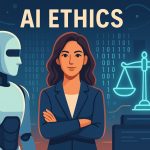Mutations are the tiny changes in DNA that drive the vast complexity of life on Earth. They are both creators and destroyers—fueling evolution, enabling adaptation, and occasionally causing genetic disorders. Every living organism carries mutations, and without them, evolution would never have occurred. From the patterns on butterfly wings to the resilience of viruses, mutations shape all biological diversity. Understanding how mutations arise and influence life reveals the delicate balance between chance, change, and survival.
What Are Mutations?
A mutation is a change in the DNA sequence that alters the genetic code of an organism. DNA consists of billions of chemical bases—adenine (A), thymine (T), cytosine (C), and guanine (G)—that serve as instructions for building proteins. When even a single base is changed, inserted, or deleted, it can modify how a gene works. Mutations occur naturally during DNA replication, but they can also be triggered by environmental factors such as radiation, chemicals, or viruses. While some mutations are harmless, others can be beneficial or harmful depending on where they occur and what they affect.
Types of Mutations
Mutations can be classified based on how they alter genetic information:
- Point mutations involve a single base change, like replacing A with G.
- Insertion and deletion mutations add or remove DNA bases, potentially shifting the entire reading frame of a gene.
- Chromosomal mutations involve large-scale changes, such as duplications or translocations of entire DNA segments.
- Silent mutations occur without changing the resulting protein, while missense and nonsense mutations can change or stop protein production.
Each mutation type affects the cell differently, illustrating how fragile and dynamic the genome truly is.
Mutations and Evolution
From an evolutionary perspective, mutations are essential. They introduce genetic variation, allowing populations to adapt to changing environments. Natural selection acts upon these variations—favorable mutations spread through generations, while harmful ones tend to disappear. For instance, mutations have enabled bacteria to develop antibiotic resistance and plants to survive in extreme climates. Over millions of years, this process has produced the extraordinary diversity of species on Earth. Evolutionary biologists describe mutations as the raw material of evolution, without which no new traits or species could emerge.
Harmful and Beneficial Mutations
Although many people associate mutations with disease, not all are negative. Harmful mutations can cause genetic disorders such as cystic fibrosis or sickle cell anemia, but beneficial ones often go unnoticed because they help organisms survive better. For example, the mutation that causes sickle cell anemia also provides resistance to malaria—a striking case of balanced selection. Similarly, mutations in the CCR5 gene can make individuals resistant to HIV infection. Scientists study these cases to understand how genetic variation shapes human health and adaptation.
Mutations in Modern Medicine and Research
In modern science, mutations are both tools and targets. Geneticists use mutagenesis—the deliberate induction of mutations—to study gene function. Medical researchers sequence patient DNA to identify mutations responsible for inherited diseases. The rise of gene-editing technologies such as CRISPR-Cas9 now allows scientists to correct harmful mutations with unprecedented precision. This has opened new frontiers in personalized medicine, cancer therapy, and genetic research. However, experts emphasize the ethical importance of using these technologies responsibly, ensuring that genetic modification serves therapeutic purposes rather than enhancement or eugenics.
Environmental and Artificial Mutagens
Mutations can also result from external agents called mutagens. Common examples include ultraviolet radiation, X-rays, certain industrial chemicals, and even some viruses. These mutagens can damage DNA strands or disrupt replication, leading to cancer or hereditary changes. Environmental scientists warn that pollution and radiation exposure increase mutation rates, potentially affecting entire ecosystems. On the other hand, controlled mutation induction in agriculture and biotechnology helps create stronger crops and beneficial microorganisms. Thus, the power of mutation can be both a natural force and a scientific tool.
Expert Perspectives on Mutation and Ethics
Experts offer diverse perspectives on the ethical implications of manipulating mutations. Evolutionary biologist Richard Dawkins emphasizes the natural beauty of mutation-driven evolution, calling it “the blind watchmaker” of life. Conversely, bioethicists like Julian Savulescu caution that editing the human germline could have unforeseen consequences for future generations. Many scientists agree that while mutation research holds immense promise, strict regulation and moral oversight are crucial to prevent misuse. The balance between innovation and caution defines the future of genetics.
Interesting Facts
- Each human is born with around 60 to 100 new mutations compared to their parents.
- The mutation rate in humans is about one change per 100 million DNA bases per generation.
- Some species, like viruses, mutate thousands of times faster than humans, enabling rapid evolution.
- A rare beneficial mutation called lactase persistence allows adults to digest milk—an advantage in dairy-farming cultures.
- Most mutations occur in non-coding DNA and have no observable effect on the organism.
Glossary
- Mutation – A change in the DNA sequence that may alter genetic function.
- Point Mutation – A change affecting a single base pair in DNA.
- Frameshift Mutation – A genetic change caused by insertion or deletion of bases that shifts the reading frame.
- Chromosomal Mutation – A large-scale alteration involving whole sections of chromosomes.
- Mutagen – An external factor that increases the likelihood of mutations.
- CRISPR-Cas9 – A modern gene-editing tool that allows scientists to modify DNA sequences precisely.
- Balanced Selection – A situation where a harmful mutation provides a survival advantage under certain conditions.
- Lactase Persistence – The ability to digest lactose in adulthood due to a beneficial genetic mutation.
- Gene Editing – The deliberate alteration of genetic material for medical or research purposes.
- Evolutionary Adaptation – The process by which organisms develop traits that improve survival through genetic variation.


